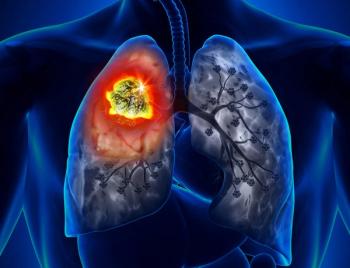
Oncology NEWS International
- Oncology NEWS International Vol 15 No 11
- Volume 15
- Issue 11
Blood Test Distinguishes Lung Cancer From CPD
A blood test that measures specific blood proteins canaccurately distinguish lung cancer fromother smoking-related lung diseases, researchersfrom France said at the 31stCongress of the European Society forMedical Oncology (ESMO).
ISTANBUL, Turkey--A blood test that measures specific blood proteins canaccurately distinguish lung cancer fromother smoking-related lung diseases, researchersfrom France said at the 31stCongress of the European Society forMedical Oncology (ESMO) (Late BreakingAbstract 8)."The findingscould help overcomea majorproblem withcancer diagnosis,and perhapsimprove treatmentoutcomes forlung cancer patients," said William Jacot,MD, of Hpital Arnaud de Villeneuve,Montpellier, France.
SELDI-TOF MS
Dr. Jacot and colleagues used SELDITOFMS (surface-enhanced laser desorptionionization-time of flight mass spectrometry)to evaluate serum proteomicprofiles in patients with lung cancer andtobacco-induced chronic pulmonary disease(CPD). SELDI separates, detects, andidentifies peptide and protein peaks fromdifferent biological samples.
The researchers collected serum samplesfrom 170 patients, including 147 withpathologically confirmed lung cancer and23 with chronic pulmonary disease, fromthe Thoracic Oncology Unit of MontpellierUniversity Hospital. When eachsample had been measured using SELDI,the output was analyzed with softwaredesigned to detect protein peaks. The discriminativepower of differentially expressed proteins was assessed using aclassification algorithm and a regressiontreealgorithm.
More than 200 protein peaks, rangingfrom 2 to 80 kDa, were generated foreach serum sample, 31 of which significantlydiffered between the two studygroups (P < .001). Of these, 19 were significantlyhigher in patients with lungcancer, and 12 were increased in thechronic pulmonary disease group. Thediagnostic value of each of these 31 peakswas high, Dr. Jacot said, with an AUCROCranging from 0.69 to 0.84. Usingthese data, the researchers were able todevelop a serum proteomic signature forlung cancer, compared with chronic pulmonarydisease.
"The results were interesting," Dr.Jacot said. "Using the peaks significantlydifferent between the two groups, webuilt a regression-tree algorithm usingtwo protein peaks [at 3204 and 7166 Da]as splitters. Using this algorithm, we wereable to correctly classify 88.2% of thesera in the learning set as coming eitherfrom lung cancer patients or those withchronic pulmonary disease."
The validity of this classification treealgorithm was then challenged in the testset phase: 73.9% of controls and 86.5%of lung cancer samples were correctlyidentified.
Articles in this issue
about 19 years ago
High ERCC1 Levels Predict Cisplatin Resistanceabout 19 years ago
CT Screening Detects Curable Stage I Lung Cancerabout 19 years ago
Triple-Negative Ca’s Respond to Optimized Taxane Chemotherapyabout 19 years ago
Avastin Approved as First-Line Rx of Nonsquamous NSCLCabout 19 years ago
Rituxan Receives FDA Approval for 2 New NHL Indicationsabout 19 years ago
Lapatinib Benefit Seen in Inflammatory Breast Cancerabout 19 years ago
Sinking Health Care Ship Could Bring Down the Economyabout 19 years ago
Breast Ultrasound Referrals Often Lack Important Infoabout 19 years ago
FDA Okays Zolinza for CTCL Skin LesionsNewsletter
Stay up to date on recent advances in the multidisciplinary approach to cancer.


















































































